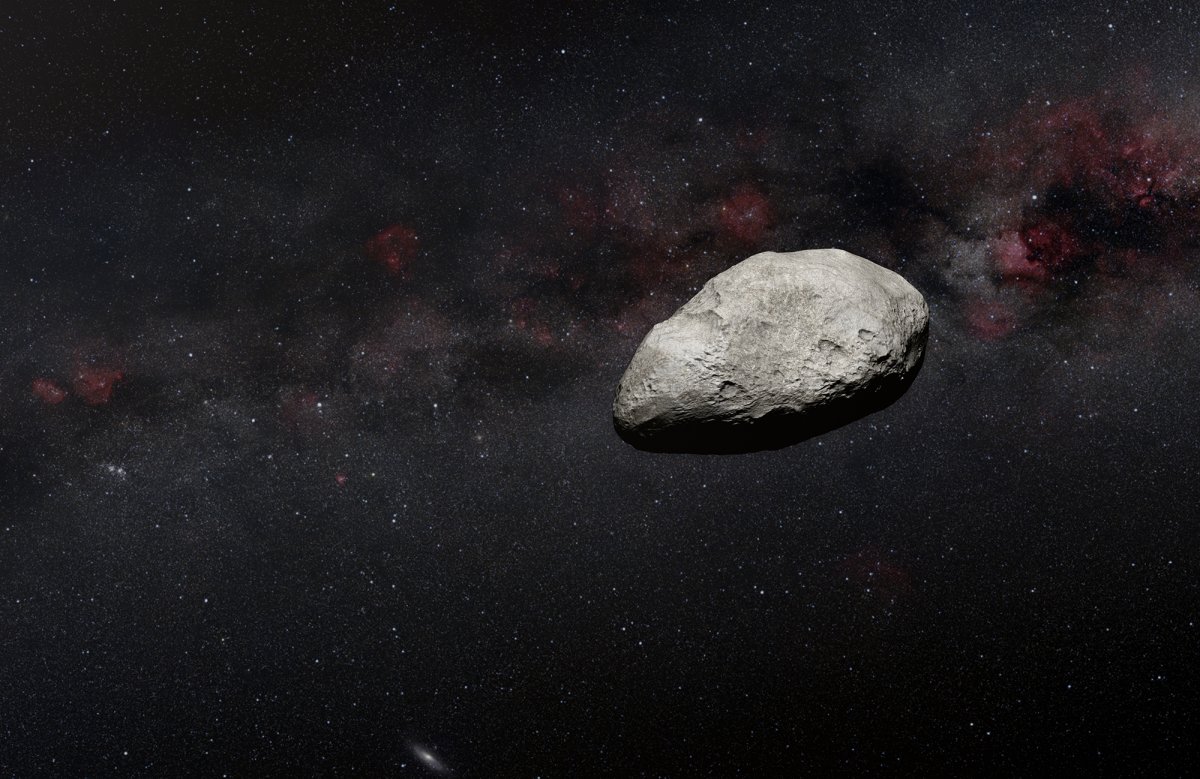#jwst
45.000 stars galaxies
This infrared image from NASA’s James Webb Space Telescope (JWST) was taken for the JWST Advanced Deep Extragalactic Survey, or JADES, program. It shows a portion of an area of the sky known as GOODS-South, which has been well studied by the Hubble Space Telescope and other observatories. More than 45,000 galaxies are visible here.
One person like that
3 Likes
NASA's JWST finds black hole from the beginning of time
Written by Sanjana Shankar, Apr 14, 2023, 05:16 pm, 3 min read
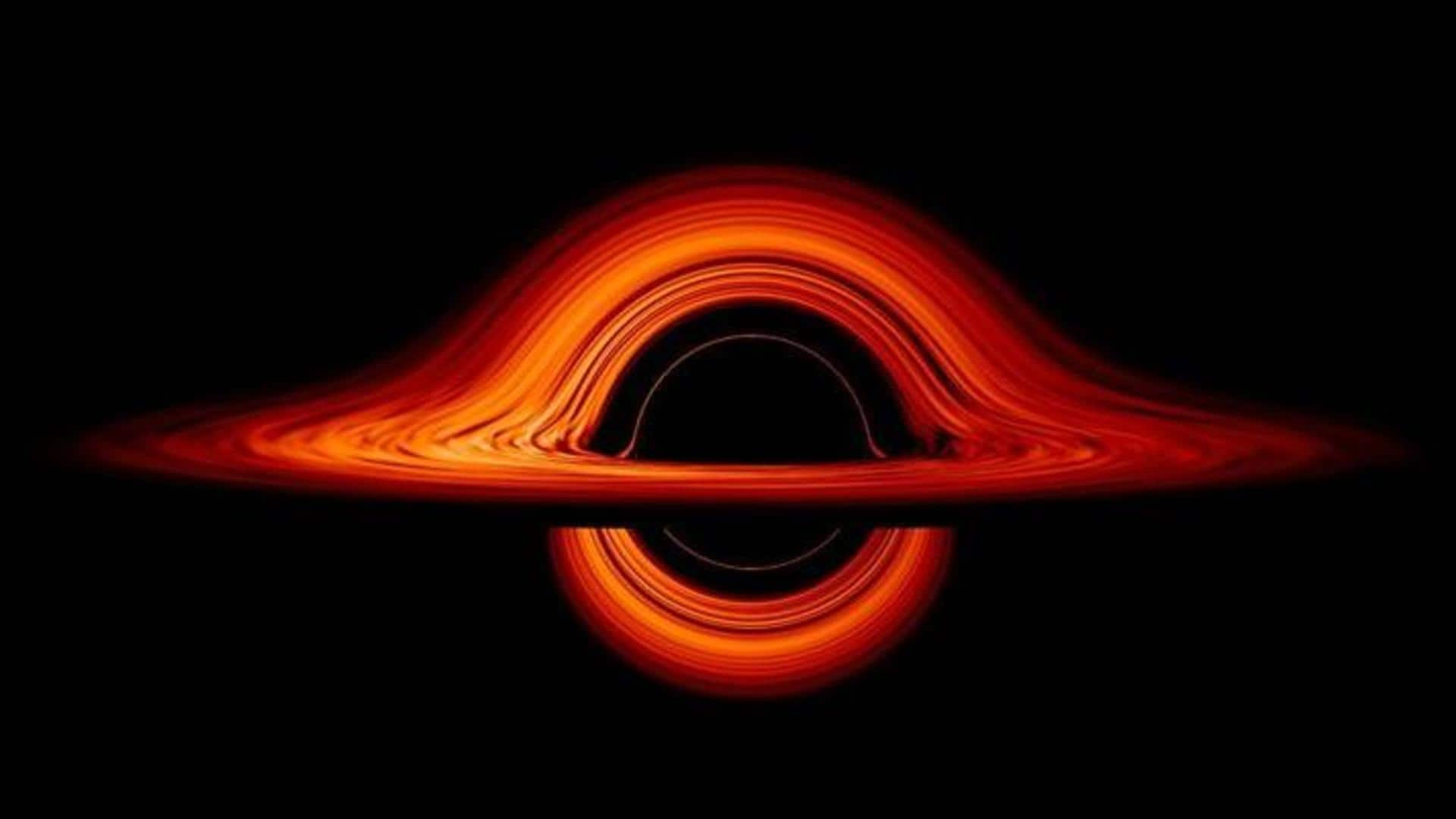
The supermassive black hole is 10 million times the mass of the Sun. Representative image (Photo credit: NASA)
NASA's James Webb Space Telescope (JWST) may have discovered the oldest black hole ever. Webb's onboard equipment allows it to look back to the earliest phases of the universe. The newly-found supermassive black hole is 10 million times the mass of the Sun. It resides at the center of a galaxy formed 570 million years since the universe began.
Why does this story matter?
What's interesting is the recently found black hole is thought to have formed during cosmic dawn, a period roughly 100 million years after the Big Bang.
It could be only one of the many black holes that swarmed the universe back then. Exactly how many of them are there and how they got so big is something we are yet to discover.
JWST's onboard infrared cameras helped spot the black hole
Light travels at a particular speed in the vacuum of space. The deeper astronomers look, the further back in time they can observe. To spot the black hole, researchers used two infrared cameras on the Webb telescope, namely the Mid-Infrared Instrument and Near Infrared Camera. The team used the in-built spectrographs on the cameras to break down the light into its individual frequencies.
Researchers found an unexpected spike in frequencies
When deconstructing the light signals and their frequencies, the researchers found an unexpected spike among the various frequencies. This spike served as a key sign, allowing the researchers to conclude that the hot material in the vicinity of the black hole was emitting radiation. But there's something we do not know for sure: how such black holes formed abruptly in the early universe.
There are two theories that could offer an explanation
There are two main theories that seek to explain how black holes emerged so suddenly after the Big Bang. One theory suggests that black holes are remains of massive stars which formed much faster than the ones we know about today. The other suggests that extremely dense clouds of gas collapsed all of a sudden to form these massive, mass-eating cosmic monsters.
There should be more black holes that are younger: Larson
"We do expect that this black hole didn't just form [recently], so there should be more that are younger and existed earlier on in the universe," the study's lead author Rebecca Larson, told Live Science. "We're just starting to be able to study this time in cosmic history this way with the JWST, and I'm excited for us to find more of them."
Researchers will continue to conduct further investigations
In future investigations, researchers will look for stronger signs of light from the distant galaxy which could provide information as to how the mysterious supermassive black hole emerged at the galaxy's center.
One person like that
#fr #science #espace #galaxie #jwst #webb #telescope
Mystère cosmique : James Webb découvre des galaxies qui contredisent nos connaissances de l’Univers
Publié par Adrien le 17/04/2023 à 13:00
Source : University of Texas
Une récente étude publiée dans la revue Nature Astronomy pourrait bouleverser notre compréhension de l’univers et remettre en question les théories cosmologiques dominantes. Mike Boylan-Kolchin, professeur agrégé d’astronomie à l’Université du Texas à Austin, a découvert six galaxies beaucoup trop massives grâce au télescope spatial James Webb (JWST). Ces galaxies semblent contredire le modèle cosmologique actuellement en vigueur, le paradigme de l’énergie noire et de la matière noire froide (ΛCDM).
Ces six galaxies ont été observées entre 500 et 700 millions d’années après le Big Bang, et leur masse est estimée à plus de 10 milliards de fois celle de notre soleil. L’une d’entre elles semble même être plus massive que la Voie lactée, malgré les milliards d’années supplémentaires dont notre galaxie a disposé pour se former et grandir. “Si les masses sont correctes, alors nous sommes en territoire inexploré”, déclare Boylan-Kolchin.
Pour que de telles galaxies se forment si rapidement et à une telle taille, elles devraient convertir presque 100% de leur gaz disponible en étoiles. Or, selon Boylan-Kolchin, “nous observons généralement un maximum de 10% de gaz converti en étoiles”. Cette découverte soulève donc de sérieuses questions sur la manière dont les galaxies se forment et sur l’expansion de l’univers après le Big Bang.
Les masses et les temps écoulés depuis le Big Bang pour ces galaxies ne sont pour l’instant que des estimations et nécessitent une confirmation par spectroscopie. Il est possible que des trous noirs supermassifs au centre de ces galaxies rendent leur gaz environnant plus chaud et plus lumineux, leur conférant une apparence plus massive qu’elles ne le sont réellement. Il se pourrait également que leur distance et leur âge soient surestimés en raison de la poussière cosmique.
Les données sur ces galaxies proviennent du Cosmic Evolution Early Release Science Survey (CEERS), une initiative multi-institutionnelle du JWST dirigée par l’astronome de l’UT Austin, Steven Finkelstein. Un autre projet collaboratif du JWST, COSMOS-Web, pourrait également contribuer à résoudre ce dilemme en fournissant des données spectroscopiques sur ces galaxies. Co-dirigé par Caitlin Casey de l’UT Austin, COSMOS-Web couvre une zone environ 50 fois plus grande que celle du CEERS et devrait découvrir des milliers de galaxies.
Cette recherche est soutenue par la National Science Foundation et la NASA.
3 Likes
10 Comments
One person like that
4 Likes

Ich glaube schon, dass sich Jupiter und Mars aufgrund ihrer Größe auch vom #JWST eines Tages werden finden lassen.
2 Likes
#en #space #JWST #ESA
Via @🌌 °/// ✨
NGC 346
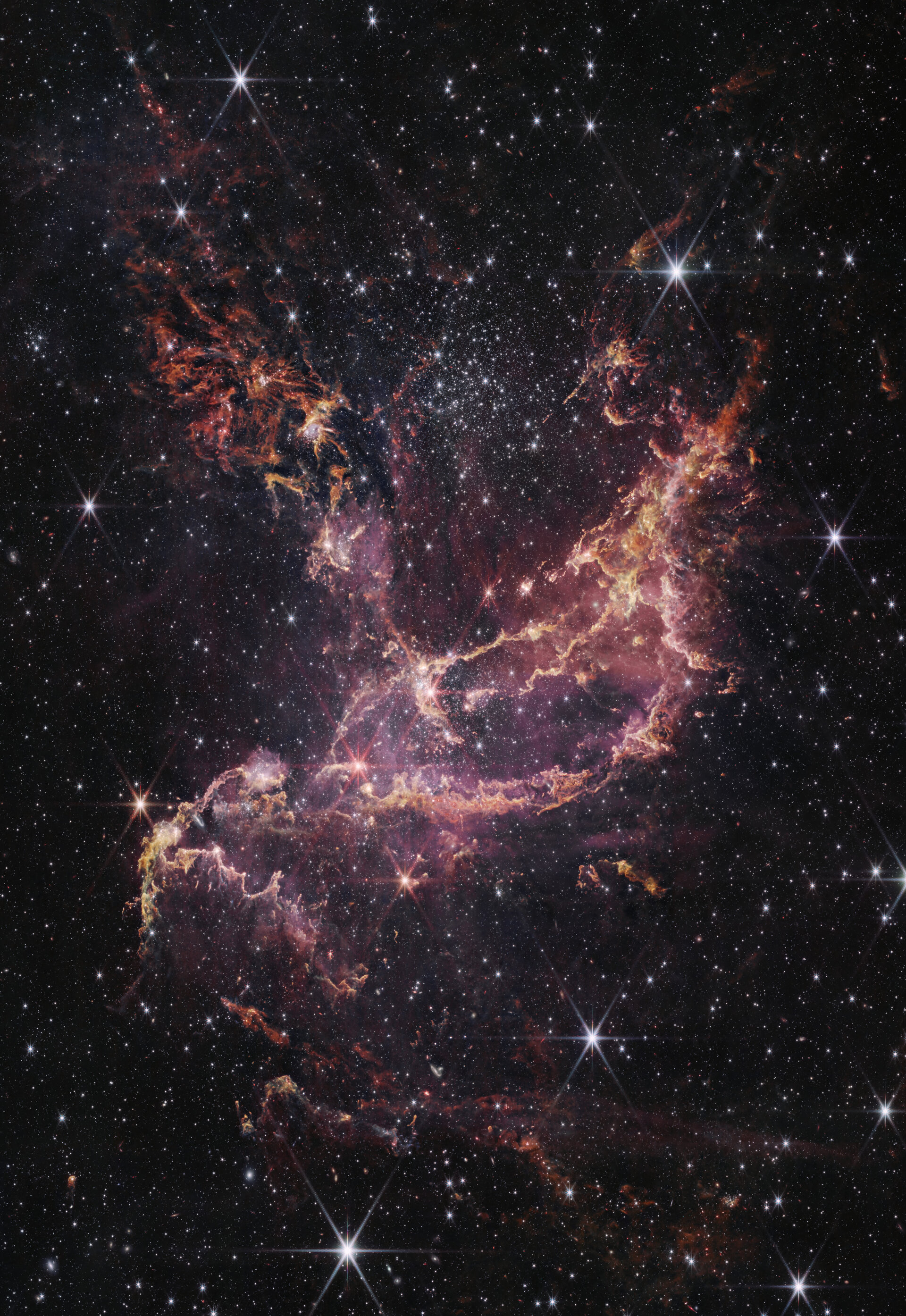
NASA/ESA/CSA James Webb Space Telescope, near infra-red.
NGC 346, one of the most dynamic star-forming regions in nearby galaxies, is full of mystery. Now, though, it is less mysterious thanks to new findings from the NASA/ESA/CSA James Webb Space Telescope.
NCG 346 is located in the Small Magellanic Cloud (SMC), a dwarf galaxy close to our Milky Way. The SMC contains lower concentrations of elements heavier than hydrogen or helium, which astronomers call metals, than seen in the Milky Way. Since dust grains in space are composed mostly of metals, scientists expected that there would only be small amounts of dust, and that it would be hard to detect. But new data from Webb reveals just the opposite.
Astronomers probed this region because the conditions and amount of metals within the SMC resemble those seen in galaxies billions of years ago, during an era in the Universe's history known as 'cosmic noon,' when star formation was at its peak. Some 2 to 3 billion years after the Big Bang, galaxies were forming stars at a furious rate. The fireworks of star formation happening then still shape the galaxies we see around us today.
“A galaxy during cosmic noon wouldn’t have one NGC 346, as the Small Magellanic Cloud does; it would have thousands”, said Margaret Meixner, an astronomer at the Universities Space Research Association and principal investigator of the research team. “But even if NGC 346 is now the one and only massive cluster furiously forming stars in its galaxy, it offers us a great opportunity to probe the conditions that were in place at cosmic noon.”
By observing protostars still in the process of forming, researchers can learn if the star formation process in the SMC is different from what we observe in our own Milky Way. Previous infrared studies of NGC 346 have focused on protostars heavier than about five to eight times the mass of our Sun. “With Webb, we can probe down to lighter-weight protostars, as small as one tenth of our Sun, to see if their formation process is affected by the lower metal content,” said Olivia Jones of the United Kingdom Astronomy Technology Centre, at the Royal Observatory Edinburgh, a co-investigator on the program.
As stars form, they gather gas and dust, which can look like ribbons in Webb imagery, from the surrounding molecular cloud. The material collects into an accretion disc that feeds the central protostar. Astronomers have detected gas around protostars within NGC 346, but Webb’s near-infrared observations mark the first time they have also detected dust in these discs.
“We’re seeing the building blocks, not only of stars, but also potentially of planets,” said Guido De Marchi of the European Space Agency, a co-investigator on the research team. “And since the Small Magellanic Cloud has a similar environment to that of galaxies during cosmic noon, it’s possible that rocky planets could have formed earlier in the history of the Universe than we might have thought.”
The team also has spectroscopic observations from Webb’s NIRSpec instrument that they are continuing to analyse. These data are expected to provide new insights into the material accreting onto individual protostars, as well as the environment immediately surrounding the protostars.
NGC 346, one of the most dynamic star-forming regions in nearby galaxies, is full of mystery. Now, though, it is less mysterious thanks to new findings from the NASA/ESA/CSA James Webb Space Telescope.
NCG 346 is located in the Small Magellanic Cloud (SMC), a dwarf galaxy close to our Milky Way. The SMC contains lower concentrations of elements heavier than hydrogen or helium, which astronomers call metals, than seen in the Milky Way. Since dust grains in space are composed mostly of metals, scientists expected that there would only be small amounts of dust, and that it would be hard to detect. But new data from Webb reveals just the opposite.
Astronomers probed this region because the conditions and amount of metals within the SMC resemble those seen in galaxies billions of years ago, during an era in the Universe's history known as 'cosmic noon,' when star formation was at its peak. Some 2 to 3 billion years after the Big Bang, galaxies were forming stars at a furious rate. The fireworks of star formation happening then still shape the galaxies we see around us today.
“A galaxy during cosmic noon wouldn’t have one NGC 346, as the Small Magellanic Cloud does; it would have thousands”, said Margaret Meixner, an astronomer at the Universities Space Research Association and principal investigator of the research team. “But even if NGC 346 is now the one and only massive cluster furiously forming stars in its galaxy, it offers us a great opportunity to probe the conditions that were in place at cosmic noon.”
By observing protostars still in the process of forming, researchers can learn if the star formation process in the SMC is different from what we observe in our own Milky Way. Previous infrared studies of NGC 346 have focused on protostars heavier than about five to eight times the mass of our Sun. “With Webb, we can probe down to lighter-weight protostars, as small as one tenth of our Sun, to see if their formation process is affected by the lower metal content,” said Olivia Jones of the United Kingdom Astronomy Technology Centre, at the Royal Observatory Edinburgh, a co-investigator on the program.
As stars form, they gather gas and dust, which can look like ribbons in Webb imagery, from the surrounding molecular cloud. The material collects into an accretion disc that feeds the central protostar. Astronomers have detected gas around protostars within NGC 346, but Webb’s near-infrared observations mark the first time they have also detected dust in these discs.
“We’re seeing the building blocks, not only of stars, but also potentially of planets,” said Guido De Marchi of the European Space Agency, a co-investigator on the research team. “And since the Small Magellanic Cloud has a similar environment to that of galaxies during cosmic noon, it’s possible that rocky planets could have formed earlier in the history of the Universe than we might have thought.”
The team also has spectroscopic observations from Webb’s NIRSpec instrument that they are continuing to analyse. These data are expected to provide new insights into the material accreting onto individual protostars, as well as the environment immediately surrounding the protostars.
NASA, ESA, CSA, STScI, A. Pagan (STScI); CC BY 4.0
Wikipedia:
NGC 346 is a young open cluster of stars with associated nebula located in the Small Magellanic Cloud (SMC) that appears in the southern constellation of Tucana. It was discovered August 1, 1826 by Scottish astronomer James Dunlop. J. L. E. Dreyer described it as, "bright, large, very irregular figure, much brighter middle similar to double star, mottled but not resolved". On the outskirts of the cluster is the multiple star system HD 5980, one of the brightest stars in the SMC. ...
Hubble Space Telescope image of NGC 346
Credit: HST/NASA/ESA --- Public Domain
6 Likes
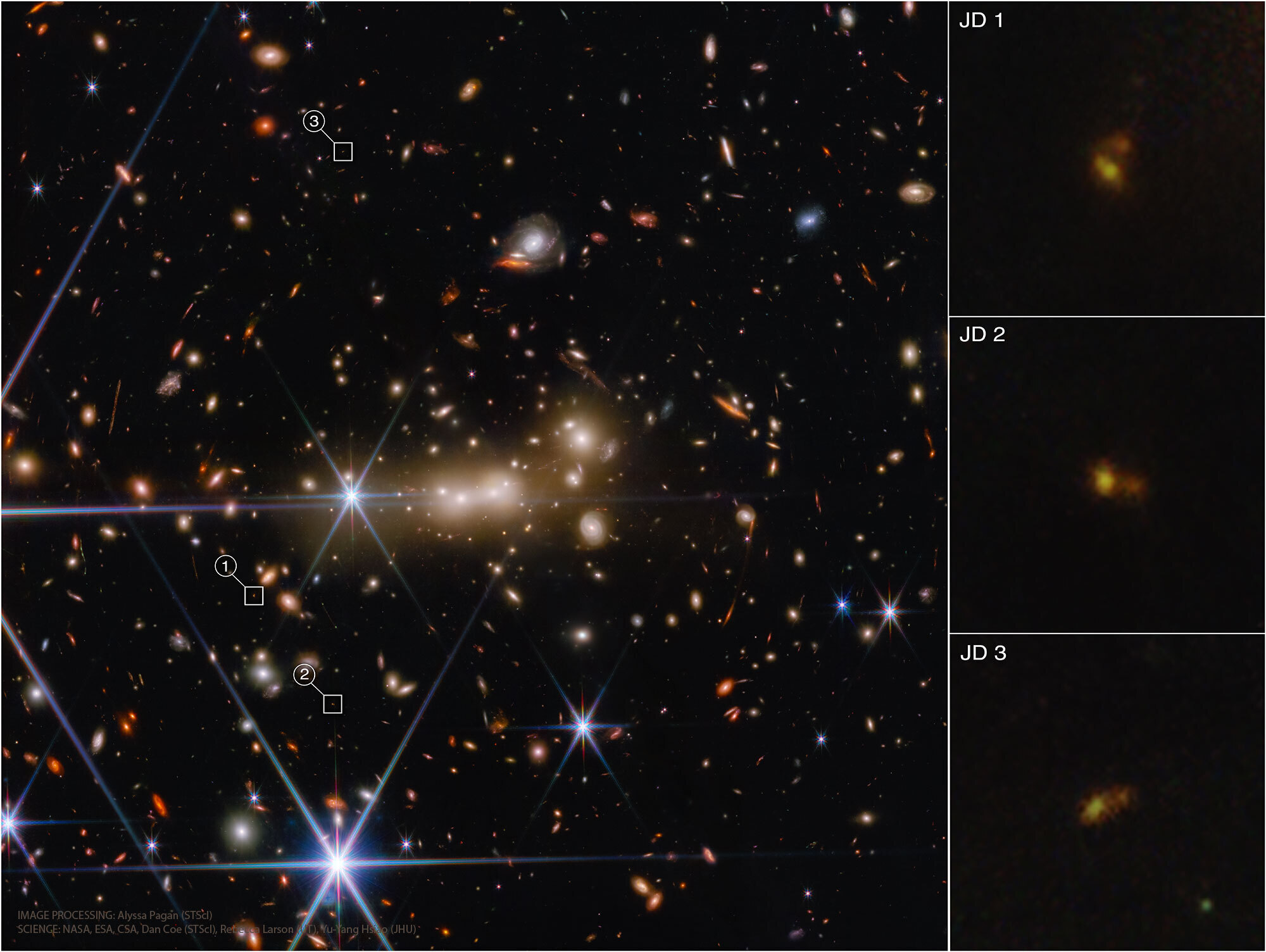
#MACS0647: #GravitationalLensing of the Early Universe by #Webb
Astronomy Picture of the Day
6 Likes
#Image of #StarCluster more than 10bn years ago sheds light on early stages of #universe | #Space | The Guardian
#Science #Astronomy #Cosmology #JWST #JamesWebbSpaceTeslescope
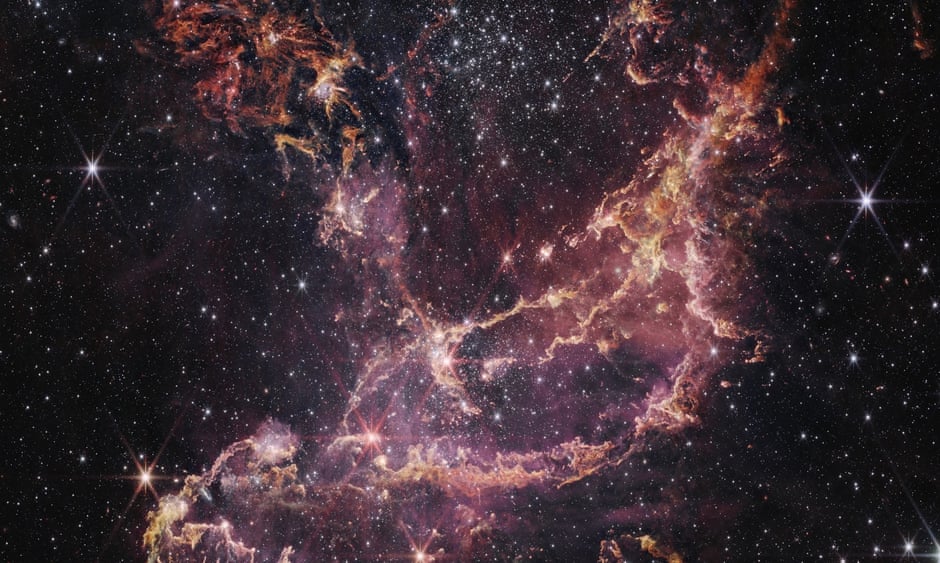
5 Likes
10 Likes
7 Comments
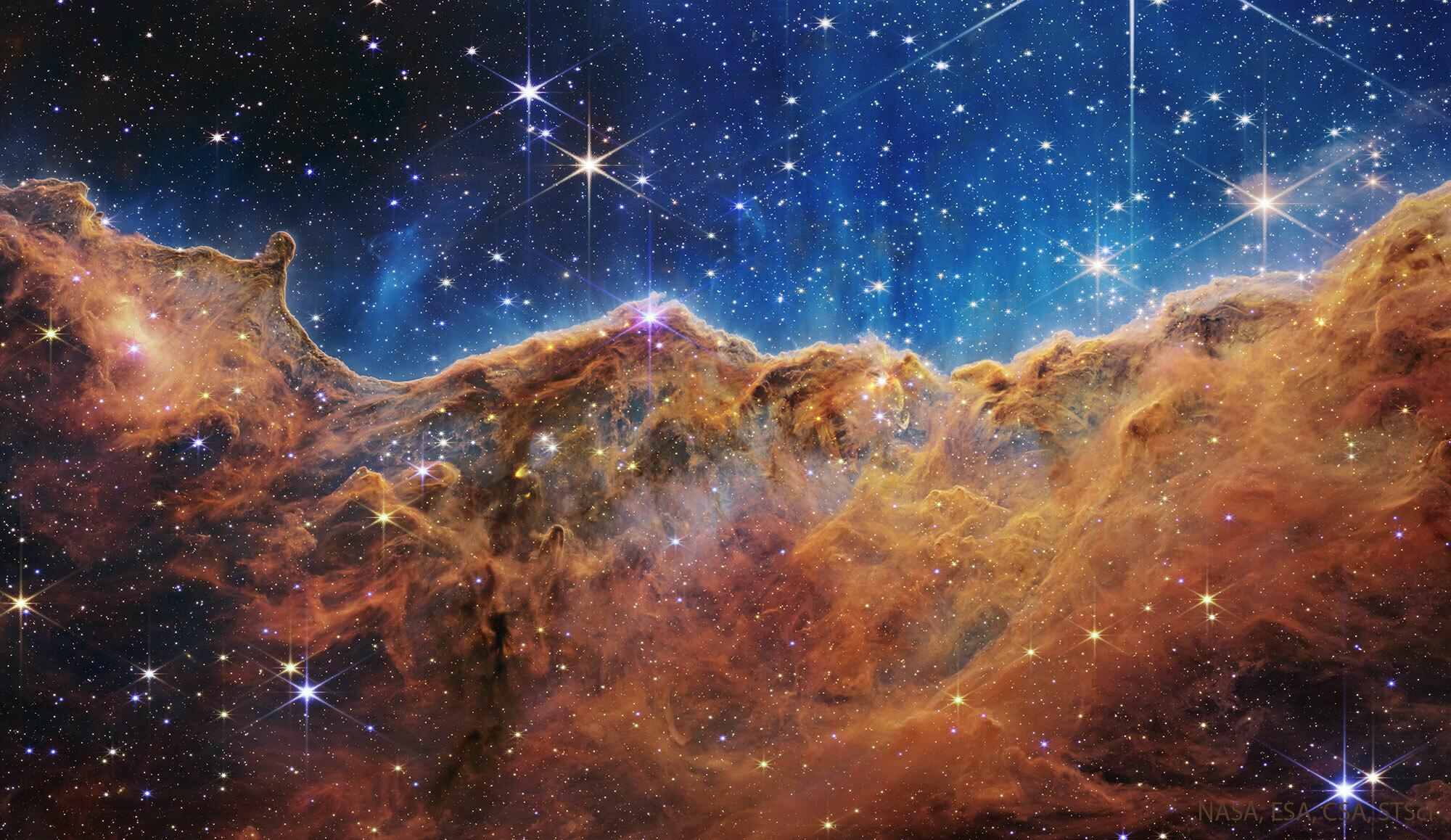
#Carina Cliffs from the #WebbSpaceTelescope
#Astronomy #Picture of the Day
6 Likes
1 Shares
‘Historic’ #JamesWebb #images show #exoplanet in unprecedented detail | #JamesWebbSpaceTelescope | The Guardian
One person like that
#JWST hat mich mal wieder geflasht...
Webb Inspects the Heart of the Phantom Galaxy
https://esawebb.org/images/potm2208a/
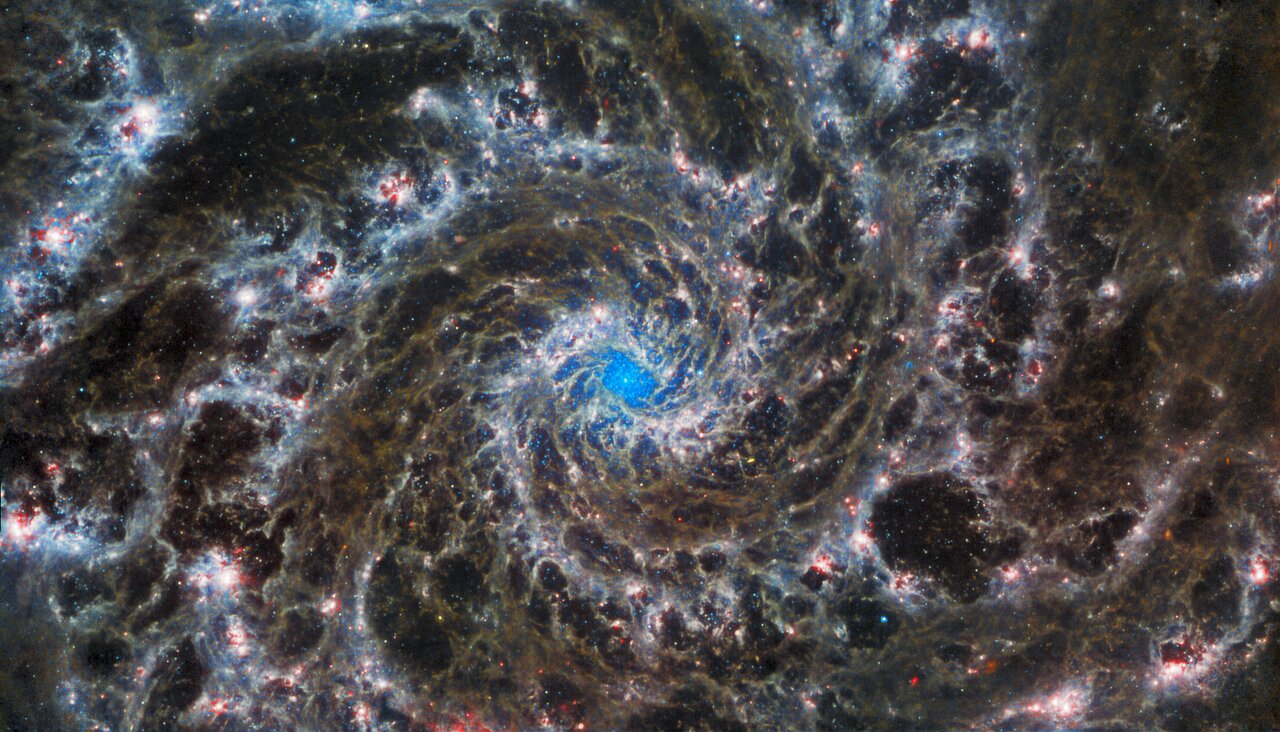
Und die Arbeit beginnt gerade erst...
One person like that
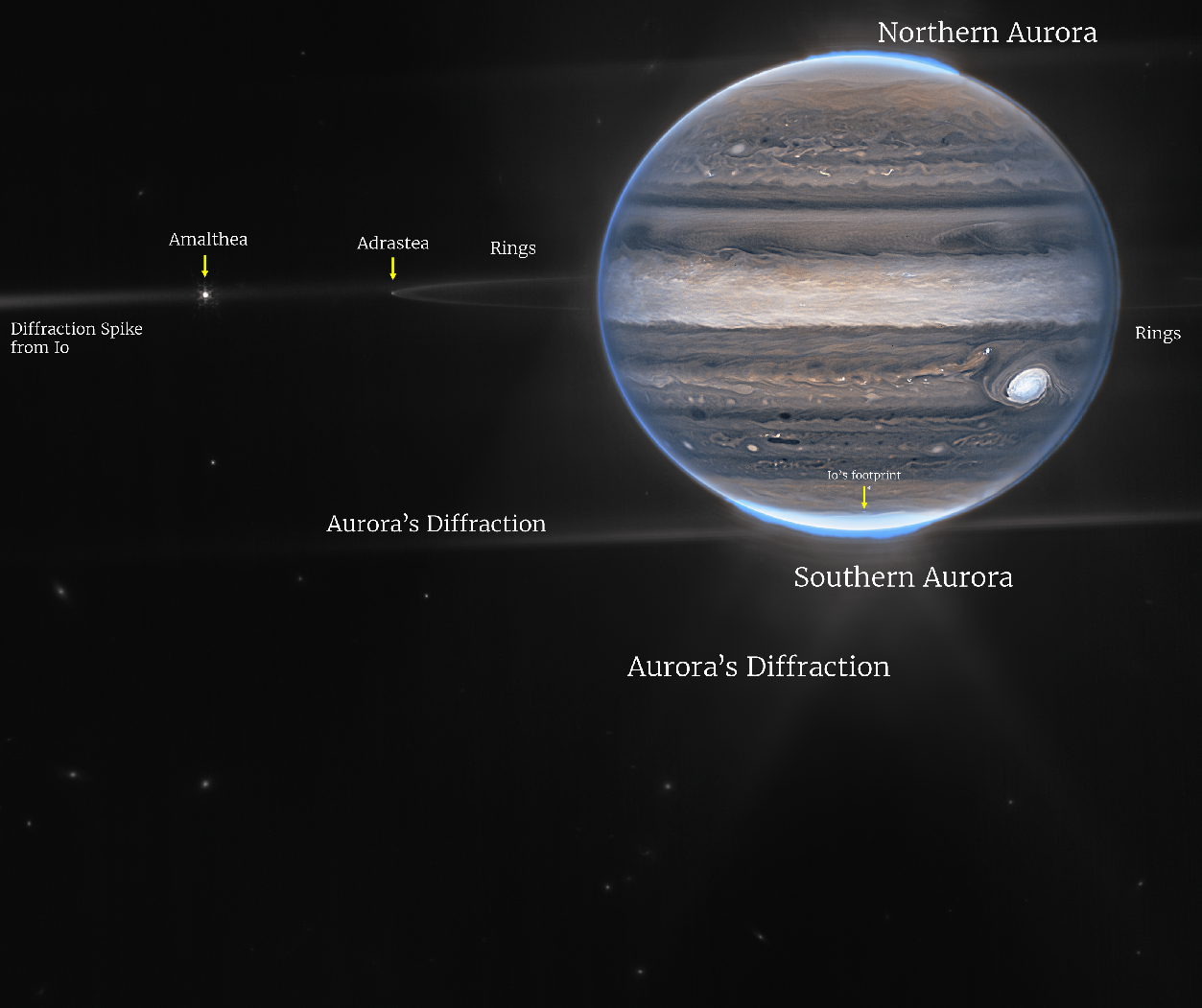
#Jupiter from the #Webb #SpaceTelescope
#Astronomy #Picture of the Day
5 Likes

The #Cartwheel #Galaxy from #Webb
#Astronomy #Picture of the Day
7 Likes
1 Comments




